-
 Bitcoin
Bitcoin $82,770.9885
-0.53% -
 Ethereum
Ethereum $1,811.0838
-0.62% -
 Tether USDt
Tether USDt $0.9996
-0.01% -
 XRP
XRP $2.0610
1.56% -
 BNB
BNB $591.5998
-0.12% -
 USDC
USDC $0.9999
0.00% -
 Solana
Solana $116.7637
-3.59% -
 Dogecoin
Dogecoin $0.1606
-2.58% -
 Cardano
Cardano $0.6491
0.00% -
 TRON
TRON $0.2375
1.32% -
 Toncoin
Toncoin $3.6204
-7.56% -
 UNUS SED LEO
UNUS SED LEO $9.4063
0.23% -
 Chainlink
Chainlink $12.8000
-2.19% -
 Stellar
Stellar $0.2605
1.01% -
 Avalanche
Avalanche $18.1124
-1.26% -
 Sui
Sui $2.2384
-2.51% -
 Shiba Inu
Shiba Inu $0.0...01223
0.65% -
 Hedera
Hedera $0.1627
0.30% -
 Polkadot
Polkadot $4.0538
1.44% -
 Litecoin
Litecoin $82.9722
0.02% -
 MANTRA
MANTRA $6.4051
3.36% -
 Bitcoin Cash
Bitcoin Cash $301.6530
1.88% -
 Bitget Token
Bitget Token $4.4826
-1.05% -
 Dai
Dai $1.0000
0.02% -
 Ethena USDe
Ethena USDe $0.9995
-0.02% -
 Monero
Monero $212.5474
-1.93% -
 Hyperliquid
Hyperliquid $11.6624
-5.49% -
 Pi
Pi $0.5680
-13.45% -
 Uniswap
Uniswap $5.8333
-1.59% -
 Aptos
Aptos $5.0533
-1.32%
Strategies for dealing with the volatility of cryptocurrency candlestick charts
Candlestick charts help traders visualize crypto volatility; long bodies and wicks signal high volatility, while strategies like diversification and DCA manage risk.
Mar 29, 2025 at 11:08 pm
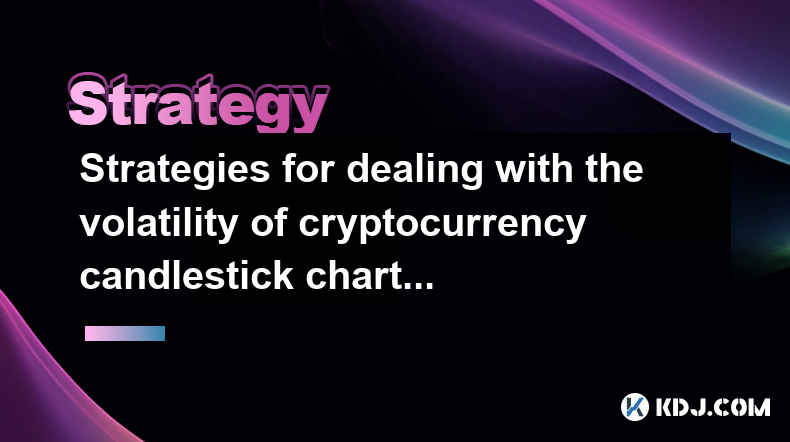
Understanding Cryptocurrency Volatility and Candlestick Charts
Cryptocurrency markets are notorious for their volatility. Price swings can be dramatic and unpredictable, creating both significant opportunities and substantial risks. Candlestick charts are a popular tool for visualizing these price movements, offering insights into market sentiment and potential future trends. Understanding how to interpret these charts and develop strategies to manage volatility is crucial for successful cryptocurrency trading. This article will explore various strategies to navigate this inherent market instability.
Identifying Volatility on Candlestick Charts
The length of the candlestick body directly reflects the price difference between the open and close of a specific time period (e.g., one hour, one day). Long bodies, either green (bullish) or red (bearish), indicate strong directional momentum. Short bodies suggest indecision or a lack of clear trend. The wicks (shadows) above and below the body show the high and low prices during that period. Long wicks often signal rejection of a price level, suggesting potential turning points. By analyzing these elements, traders can gauge the current market volatility. High volatility is typically characterized by long candlesticks and significant price gaps.
Strategies to Mitigate Volatility Risk
Several strategies can help manage the risk associated with cryptocurrency volatility. These strategies focus on minimizing losses during periods of high volatility and capitalizing on opportunities during periods of lower volatility or clear trends.
Diversification: Spreading your investment across multiple cryptocurrencies can reduce the impact of any single asset's price fluctuations. Diversification is a fundamental risk management technique across all asset classes, not just cryptocurrencies. Don't put all your eggs in one basket.
Dollar-Cost Averaging (DCA): This strategy involves investing a fixed amount of money at regular intervals, regardless of price. DCA reduces the risk of investing a large sum at a market peak. This strategy averages out your purchase price over time.
Technical Analysis: Using technical indicators alongside candlestick charts can help identify potential support and resistance levels, trend reversals, and overbought/oversold conditions. Moving averages, RSI, and MACD are commonly used indicators.
Fundamental Analysis: Understanding the underlying technology, adoption rate, and team behind a cryptocurrency can help assess its long-term potential. This helps in identifying fundamentally strong projects less susceptible to short-term volatility.
Position Sizing: Carefully determining the amount of capital to allocate to each trade is essential. Never risk more than you can afford to lose. This limits potential losses during periods of high volatility.
Stop-Loss Orders: These orders automatically sell your cryptocurrency if the price falls to a predetermined level, limiting potential losses. This is a crucial risk management tool.
Take-Profit Orders: These orders automatically sell your cryptocurrency if the price rises to a predetermined level, securing profits. Locking in profits is just as important as limiting losses.
Hedging: Employing hedging strategies, such as using futures or options contracts, can help offset potential losses in one position with gains in another. This advanced strategy requires a deep understanding of derivatives.
Reading Candlestick Patterns
Recognizing common candlestick patterns can provide valuable insights into potential price movements. For example, a bullish engulfing pattern, where a large green candle completely engulfs a previous red candle, often signals a potential bullish reversal. Conversely, a bearish engulfing pattern suggests a potential bearish reversal. Identifying these patterns requires practice and experience. Understanding hammer and hanging man patterns can also provide clues about potential support and resistance levels.
Volatility and Timeframes
The perceived volatility of a cryptocurrency can vary significantly depending on the timeframe used on the candlestick chart. A cryptocurrency might appear highly volatile on a 1-hour chart, showing rapid price swings, but relatively stable on a daily or weekly chart. Choosing the appropriate timeframe is crucial for effective analysis. Longer timeframes tend to smooth out short-term fluctuations, offering a clearer picture of the overall trend.
Managing Emotions
Volatility can trigger emotional responses in traders, leading to impulsive decisions. Fear and greed can significantly impact trading performance. Developing a disciplined trading plan and sticking to it is essential. This plan should include risk management strategies, position sizing, and clear entry and exit points.
Staying Informed
Staying updated on market news, regulatory developments, and technological advancements is crucial for understanding the factors that drive cryptocurrency price movements. Reliable news sources and community forums can provide valuable insights. However, it's important to be critical of information and avoid relying on unverified sources.
Frequently Asked Questions
Q: What is the best strategy for dealing with cryptocurrency volatility?
A: There's no single "best" strategy. The optimal approach depends on individual risk tolerance, investment goals, and trading experience. A combination of diversification, dollar-cost averaging, technical analysis, and risk management techniques is often most effective.
Q: How can I identify high volatility on a candlestick chart?
A: High volatility is typically characterized by long candlestick bodies, significant price gaps, and long wicks. Frequent and large price swings are also indicators.
Q: Are candlestick charts reliable for predicting future price movements?
A: Candlestick charts provide valuable insights into past price action and market sentiment, but they don't guarantee future price movements. They are tools for analysis, not crystal balls.
Q: What are the risks of ignoring volatility?
A: Ignoring volatility can lead to significant losses. Unexpected price swings can wipe out investment capital quickly if proper risk management isn't in place.
Q: How can I improve my ability to interpret candlestick charts?
A: Practice and experience are key. Start by analyzing historical charts, familiarize yourself with common candlestick patterns, and gradually incorporate technical indicators into your analysis. Consider using a demo account to practice before trading with real funds.
Disclaimer:info@kdj.com
The information provided is not trading advice. kdj.com does not assume any responsibility for any investments made based on the information provided in this article. Cryptocurrencies are highly volatile and it is highly recommended that you invest with caution after thorough research!
If you believe that the content used on this website infringes your copyright, please contact us immediately (info@kdj.com) and we will delete it promptly.
- Gold Exempt From New "Reciprocal" Tariffs
- 2025-04-04 06:35:12
- Time to Buy Aptos (APT) Cheap? This Chart Pattern Signals a 10% Move for the Price!
- 2025-04-04 06:35:12
- An Analyst Has Explained How Dogecoin Could Be at a Make-or-Break Level Right Now Based on a TA Chart Pattern
- 2025-04-04 06:30:12
- Micro Intelligence Company Strategy Has Purchased 22,048 Bitcoins Worth $1.92 Billion in a New Deal
- 2025-04-04 06:30:12
- BlockDAG's Beta Testnet Is Live— Aims to Achieve 15K TPS! Ethereum Price Falls 0.5% & ETC Dips 6.7%
- 2025-04-04 06:25:12
- title: New decentralized finance (DeFi) trading altcoin is surging after gaining support from the top US-based crypto exchange platform by volume
- 2025-04-04 06:25:12
Related knowledge
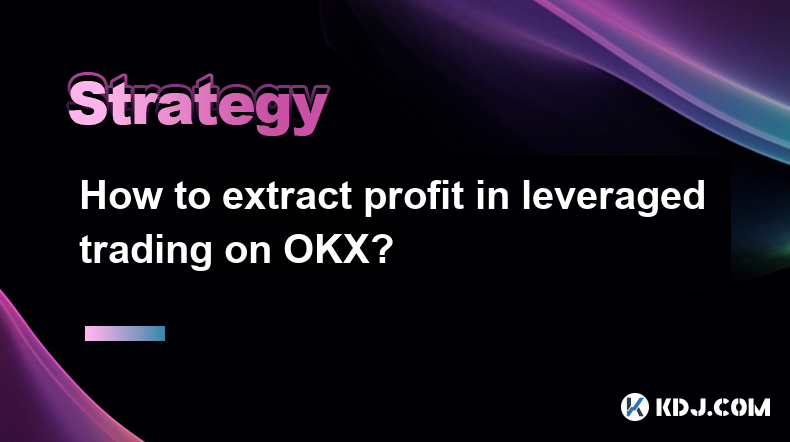
How to extract profit in leveraged trading on OKX?
Apr 04,2025 at 05:42am
Leveraged trading on OKX can be a powerful tool for traders looking to amplify their potential profits. However, it also comes with increased risk, making it essential to understand how to effectively extract profit from these trades. This article will guide you through the process of leveraging OKX's platform to maximize your gains while managing the i...

How to use the three crows candlestick combination to determine the market top?
Apr 03,2025 at 03:18pm
Three Black Crows are a classic K-line combination form that is often used to judge the top of the market in technical analysis. This pattern consists of three consecutive negative lines, the opening price of each negative line is within the entity of the previous K-line, and the closing price gradually decreases. This pattern usually appears at the end...
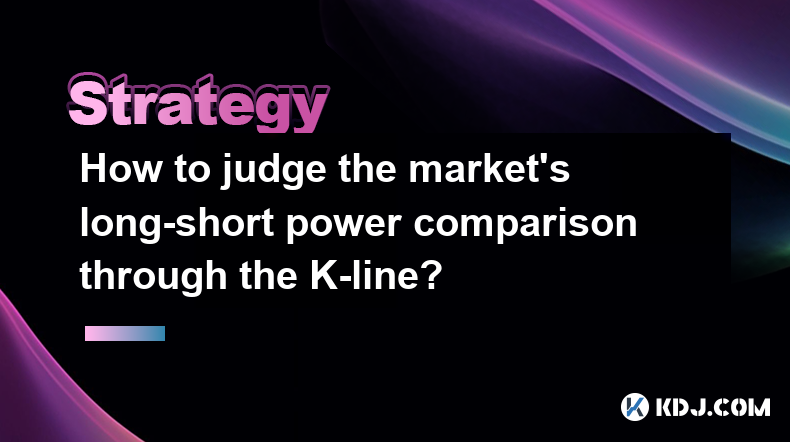
How to judge the market's long-short power comparison through the K-line?
Apr 03,2025 at 02:39pm
Judging the market's long-short power comparison through the K-line is an important skill in technical analysis. The K-line chart can not only show price changes, but also reflect the emotions and power comparison of market participants. This article will introduce in detail how to judge the market's long-short power comparison through K-lines. ...
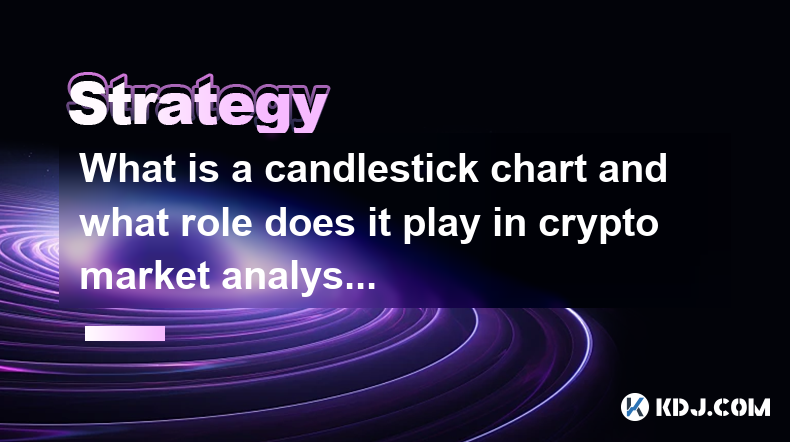
What is a candlestick chart and what role does it play in crypto market analysis?
Apr 03,2025 at 02:26pm
K-line chart, also known as candle chart, is a form of chart used to display changes in the price of financial products. In the cryptocurrency market, K-line charts are widely used to analyze the price trends of digital assets such as Bitcoin and Ethereum. This article will introduce in detail the basic structure, types of K-line charts and their specif...
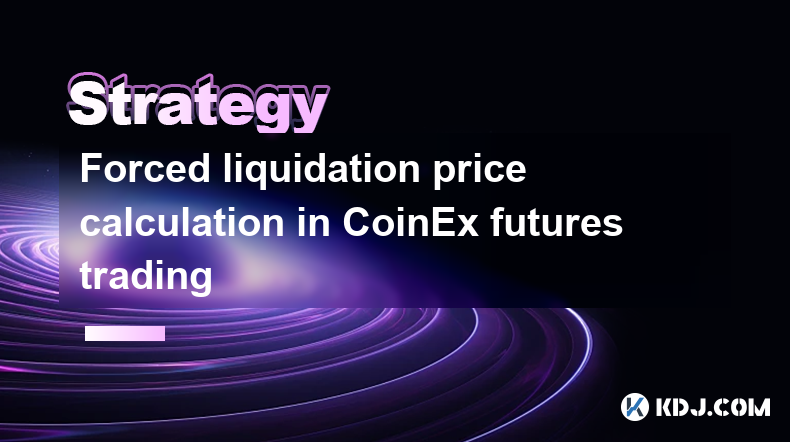
Forced liquidation price calculation in CoinEx futures trading
Apr 03,2025 at 05:35am
In CoinEx futures trading, understanding the forced liquidation price is crucial for managing risk and maintaining your positions. The forced liquidation price is the point at which your position is automatically closed to prevent further losses. This mechanism is designed to protect both the trader and the platform from negative account balances. The c...
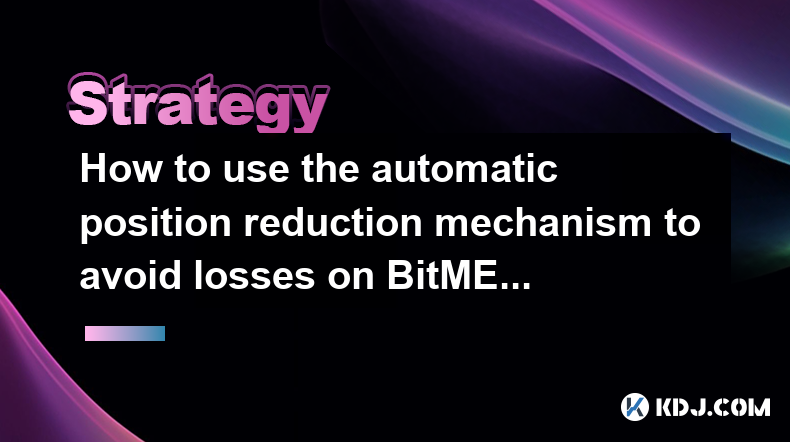
How to use the automatic position reduction mechanism to avoid losses on BitMEX
Apr 03,2025 at 02:56am
Using the automatic position reduction mechanism on BitMEX can be a strategic approach to managing risk and avoiding potential losses in the volatile cryptocurrency market. This feature, also known as Auto Deleveraging (ADL), is designed to help traders by automatically reducing their positions in certain conditions. To effectively use this mechanism, i...

How to extract profit in leveraged trading on OKX?
Apr 04,2025 at 05:42am
Leveraged trading on OKX can be a powerful tool for traders looking to amplify their potential profits. However, it also comes with increased risk, making it essential to understand how to effectively extract profit from these trades. This article will guide you through the process of leveraging OKX's platform to maximize your gains while managing the i...

How to use the three crows candlestick combination to determine the market top?
Apr 03,2025 at 03:18pm
Three Black Crows are a classic K-line combination form that is often used to judge the top of the market in technical analysis. This pattern consists of three consecutive negative lines, the opening price of each negative line is within the entity of the previous K-line, and the closing price gradually decreases. This pattern usually appears at the end...

How to judge the market's long-short power comparison through the K-line?
Apr 03,2025 at 02:39pm
Judging the market's long-short power comparison through the K-line is an important skill in technical analysis. The K-line chart can not only show price changes, but also reflect the emotions and power comparison of market participants. This article will introduce in detail how to judge the market's long-short power comparison through K-lines. ...

What is a candlestick chart and what role does it play in crypto market analysis?
Apr 03,2025 at 02:26pm
K-line chart, also known as candle chart, is a form of chart used to display changes in the price of financial products. In the cryptocurrency market, K-line charts are widely used to analyze the price trends of digital assets such as Bitcoin and Ethereum. This article will introduce in detail the basic structure, types of K-line charts and their specif...

Forced liquidation price calculation in CoinEx futures trading
Apr 03,2025 at 05:35am
In CoinEx futures trading, understanding the forced liquidation price is crucial for managing risk and maintaining your positions. The forced liquidation price is the point at which your position is automatically closed to prevent further losses. This mechanism is designed to protect both the trader and the platform from negative account balances. The c...

How to use the automatic position reduction mechanism to avoid losses on BitMEX
Apr 03,2025 at 02:56am
Using the automatic position reduction mechanism on BitMEX can be a strategic approach to managing risk and avoiding potential losses in the volatile cryptocurrency market. This feature, also known as Auto Deleveraging (ADL), is designed to help traders by automatically reducing their positions in certain conditions. To effectively use this mechanism, i...
See all articles






















































































